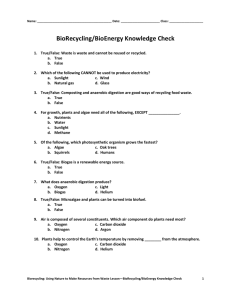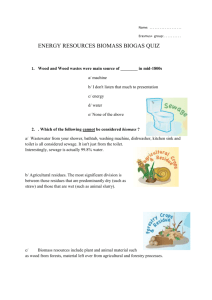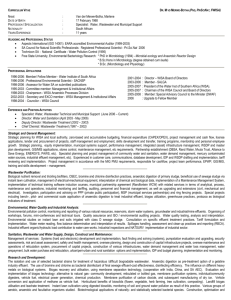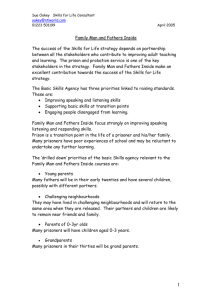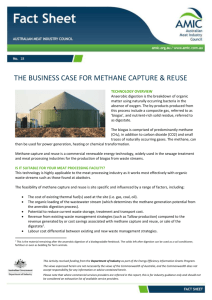Methane Capture & Reuse at Abattoirs
advertisement
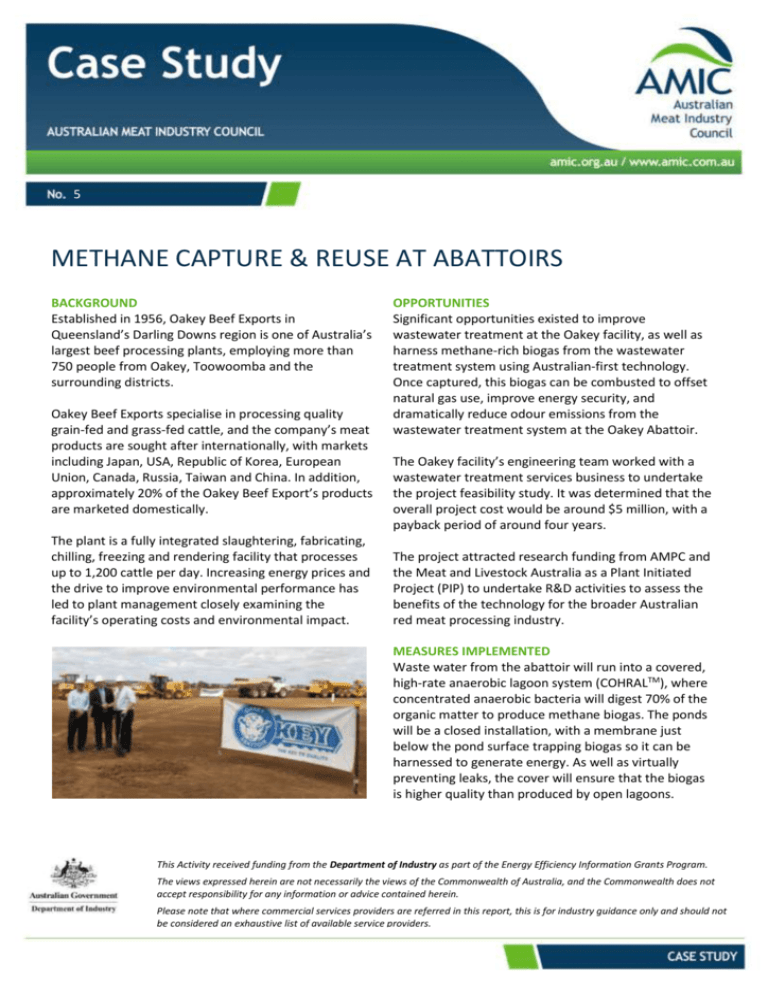
5 METHANE CAPTURE & REUSE AT ABATTOIRS BACKGROUND Established in 1956, Oakey Beef Exports in Queensland’s Darling Downs region is one of Australia’s largest beef processing plants, employing more than 750 people from Oakey, Toowoomba and the surrounding districts. Oakey Beef Exports specialise in processing quality grain-fed and grass-fed cattle, and the company’s meat products are sought after internationally, with markets including Japan, USA, Republic of Korea, European Union, Canada, Russia, Taiwan and China. In addition, approximately 20% of the Oakey Beef Export’s products are marketed domestically. The plant is a fully integrated slaughtering, fabricating, chilling, freezing and rendering facility that processes up to 1,200 cattle per day. Increasing energy prices and the drive to improve environmental performance has led to plant management closely examining the facility’s operating costs and environmental impact. OPPORTUNITIES Significant opportunities existed to improve wastewater treatment at the Oakey facility, as well as harness methane-rich biogas from the wastewater treatment system using Australian-first technology. Once captured, this biogas can be combusted to offset natural gas use, improve energy security, and dramatically reduce odour emissions from the wastewater treatment system at the Oakey Abattoir. The Oakey facility’s engineering team worked with a wastewater treatment services business to undertake the project feasibility study. It was determined that the overall project cost would be around $5 million, with a payback period of around four years. The project attracted research funding from AMPC and the Meat and Livestock Australia as a Plant Initiated Project (PIP) to undertake R&D activities to assess the benefits of the technology for the broader Australian red meat processing industry. MEASURES IMPLEMENTED Waste water from the abattoir will run into a covered, high-rate anaerobic lagoon system (COHRALTM), where concentrated anaerobic bacteria will digest 70% of the organic matter to produce methane biogas. The ponds will be a closed installation, with a membrane just below the pond surface trapping biogas so it can be harnessed to generate energy. As well as virtually preventing leaks, the cover will ensure that the biogas is higher quality than produced by open lagoons. This Activity received funding from the Department of Industry as part of the Energy Efficiency Information Grants Program. The views expressed herein are not necessarily the views of the Commonwealth of Australia, and the Commonwealth does not accept responsibility for any information or advice contained herein. Please note that where commercial services providers are referred in this report, this is for industry guidance only and should not be considered an exhaustive list of available service providers. The technology is new to the Australian red meat processing industry and will utilise steel and concrete reactor tanks adapted to the existing anaerobic lagoon system at Oakey. Unlike other covered anaerobic lagoon technology, it has a sub-surface membrane to prevent methane leaks and a unique waste water distribution and settling system which reduces water retention from 25 days to 15. A storage system will reserve biogas for peak operating demand. This biogas will fire the abattoir’s boiler to heat water for sterilisation and rendering. OUTCOMES When up and running in late 2015, the system is expected to replace usage of about 50,000 gigajoules natural gas a year, which equates to over 40% of current annual consumption. The system will also reduce odour emissions from the wastewater treatment system to negligible levels and further refine treated waste water for irrigation and cropping. Figure 1 - Overview of COHRALTM technology. Source: http://www.cstwastewater.com/oakey-abattoirs-world-environmental-initiative
